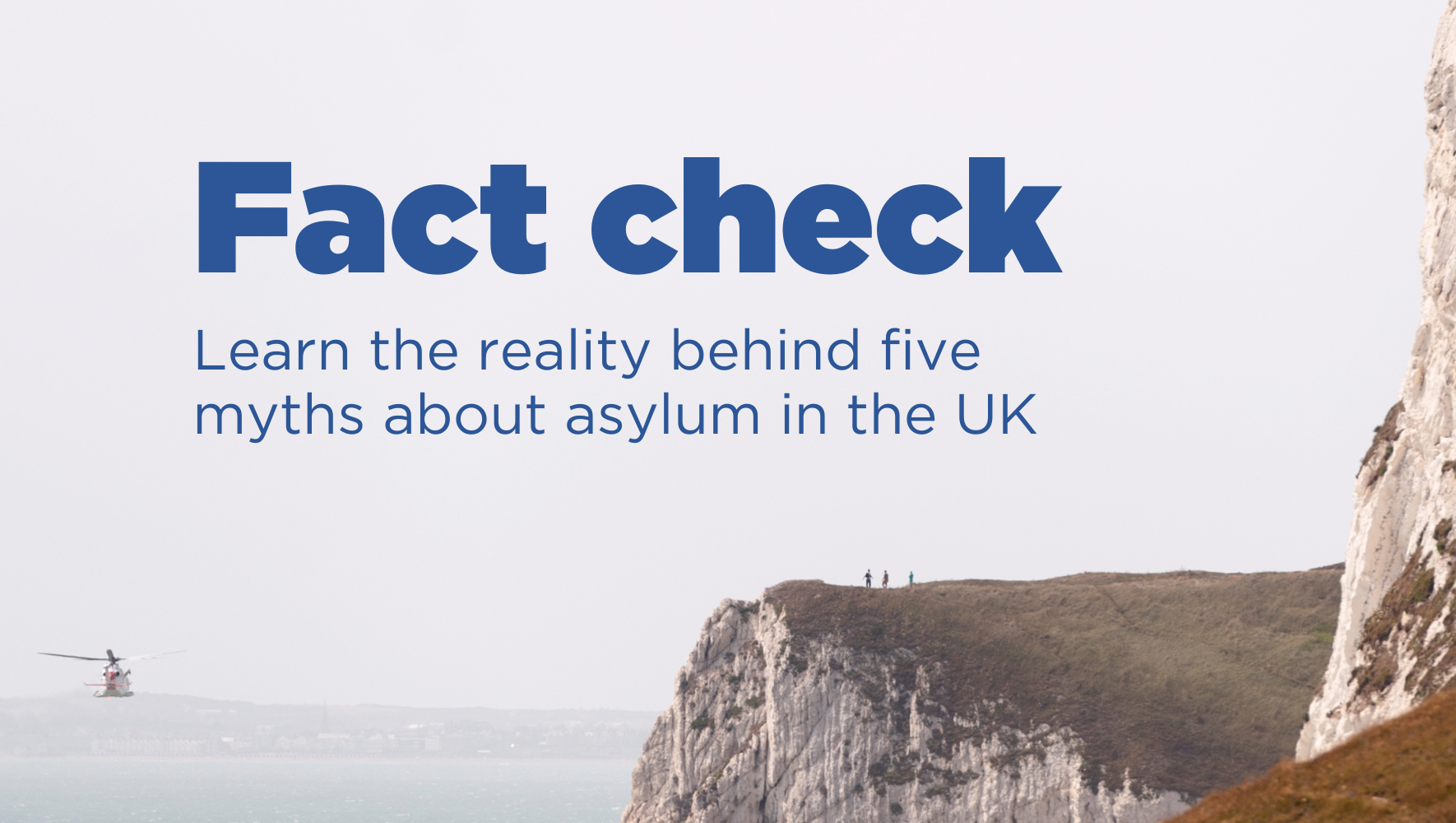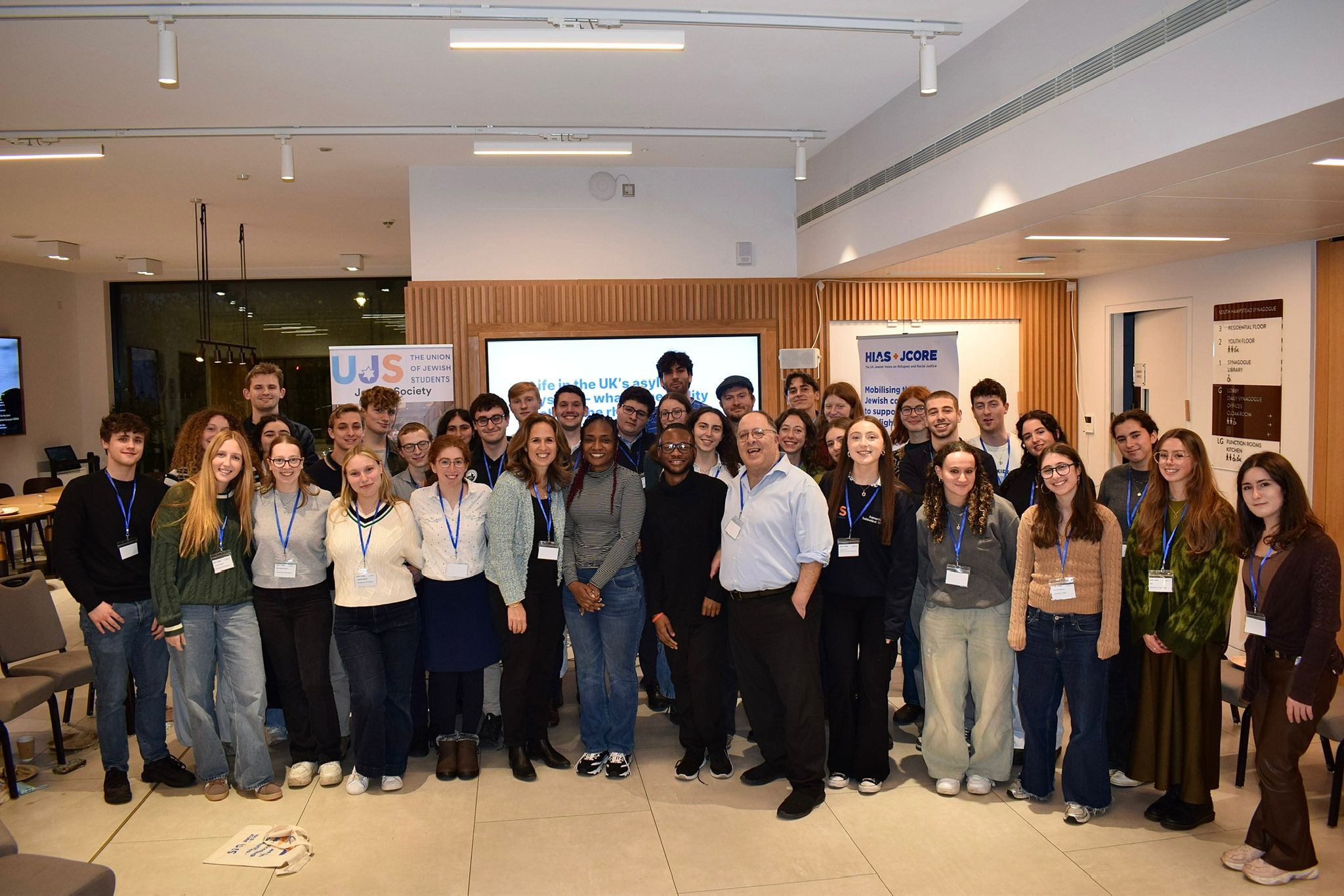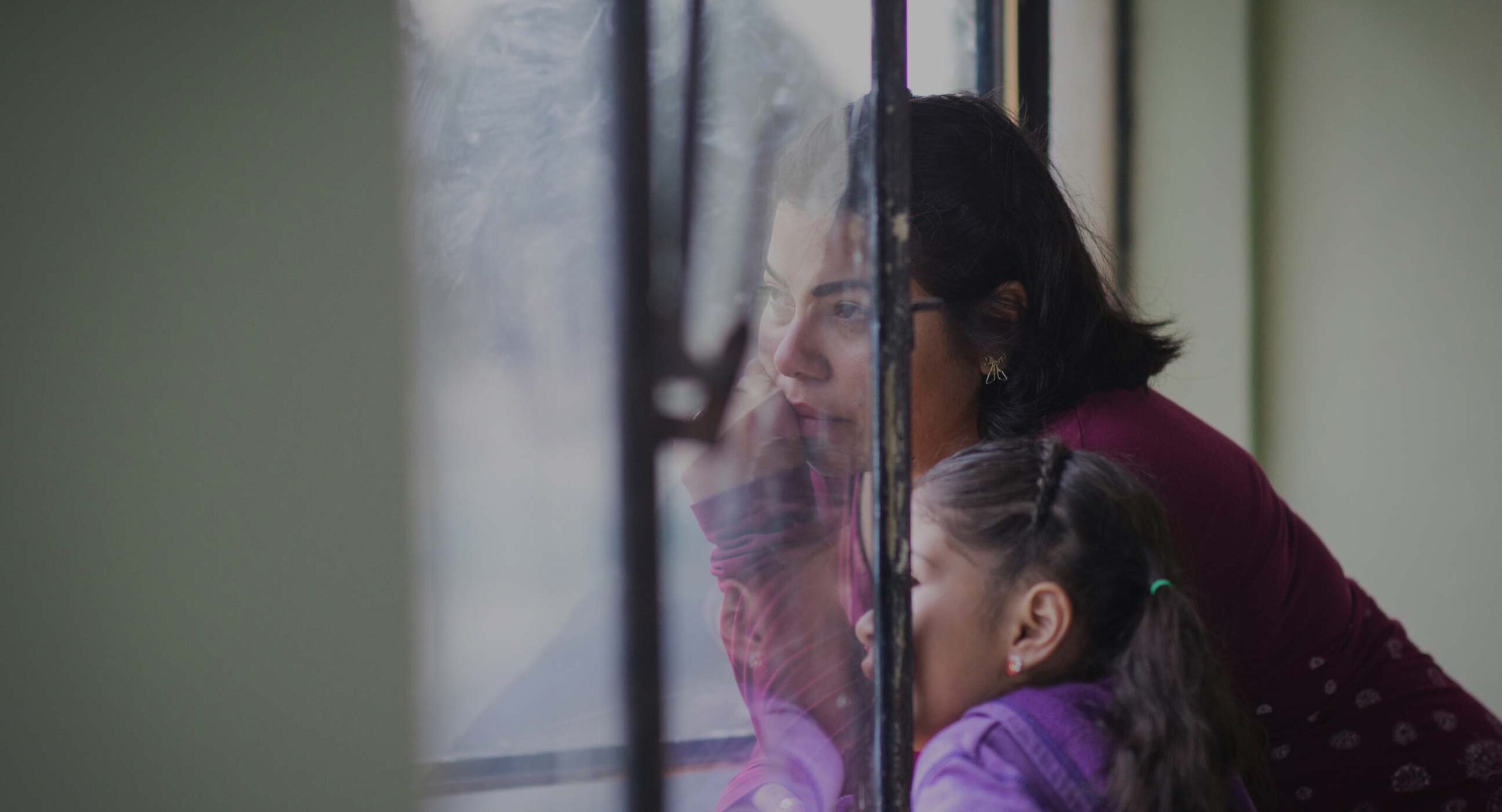
Misinformation helped fuel the far-right riots earlier this summer. And all too often, myths about refugees and people seeking asylum are also repeated by politicians and the media – so getting the facts is crucial.
Want to learn about the reality behind the rhetoric? Read on to find out the truth behind five frequently repeated misconceptions about displaced people.
Myth one: Asylum seekers are just coming to the UK for financial gain
In reality, the UK’s asylum system often forces people into destitution. People waiting for their asylum claim are banned from working and given just £8.86 a week if they’re housed in catered accommodation.
So why do people seek asylum here?
There are many reasons: from language ties (often linked to the UK’s colonial past), to family connections, and issues with reunion schemes, and (despite recent years) the UK’s international reputation as a country which respects human rights. Refugees might also not chose the UK as their destination, and instead be forced into dangerous journeys by people smugglers.
Myth two: People seeking asylum must do so in the first safe country
Contrary to some perceptions, there is no requirement under the UN Refugee Convention to claim asylum in the first safe country reached.
Despite this, the vast majority of the world’s refugees (69%) live in a neighbouring country. The UK also receives far fewer asylum applications (for 84,425 people in 2023) than many of our European neighbours – Germany (351,510 people), France (166,880 people), Spain (162,420 people) and France (135,820 people) all received far more applications.
It’s also important to remember also that countries which may feel ‘safe’ to some people may not feel safe to everyone.
Myth three: People seeking asylum are housed in luxury hotels
Despite what some media reporting may have you believe, much of the accommodation asylum seekers are housed in is poor quality, overcrowded, and sometimes unsafe.
In some cases it’s also incredibly isolated, an unnecessary barrier to integration. And while we’re pleased that the prison-like Bibby Stockholm barge will close in January 2025, such accommodation should never be used.
These issues don’t end when people receive refugee status. Current policy gives new refugees just 28 days to ‘move on’ from their Home Office accommodation – a situation which forces many people into homelessness.
Myth four: People crossing the Channel on small boats are ‘jumping the queue’
Quite simply, there is no queue. For most displaced people, there aren’t any safe routes available for them to reach the UK.
The few existing schemes are incredibly narrow and often restricted to certain nationalities. Consequently, the UK resettled just 736 refugees in 2023.
Instead of jumping the queue, people seeking asylum instead actually find themselves in one when they enter the UK’s asylum system. While the new government has pledged to urgently address the backlog, at the end of 2023, 128,786 people were waiting for an initial decision on their asylum claim.
Myth five: People seeking asylum in the UK aren’t ‘genuine refugees’
The reality is that the UK’s asylum process is arduous and intensive: it can be a very difficult and traumatic experience for people seeking asylum. But despite this, most are found to have legitimate claims.
In 2023, 67% of initial decisions were grants of protection. Of people crossing the Channel in small boats, the top five nationalities were people from Afghanistan, Iran, Turkey, Syria and Iraq (year ending March 2024) – all countries with known human rights issues, or where there are ongoing or recent conflicts.



